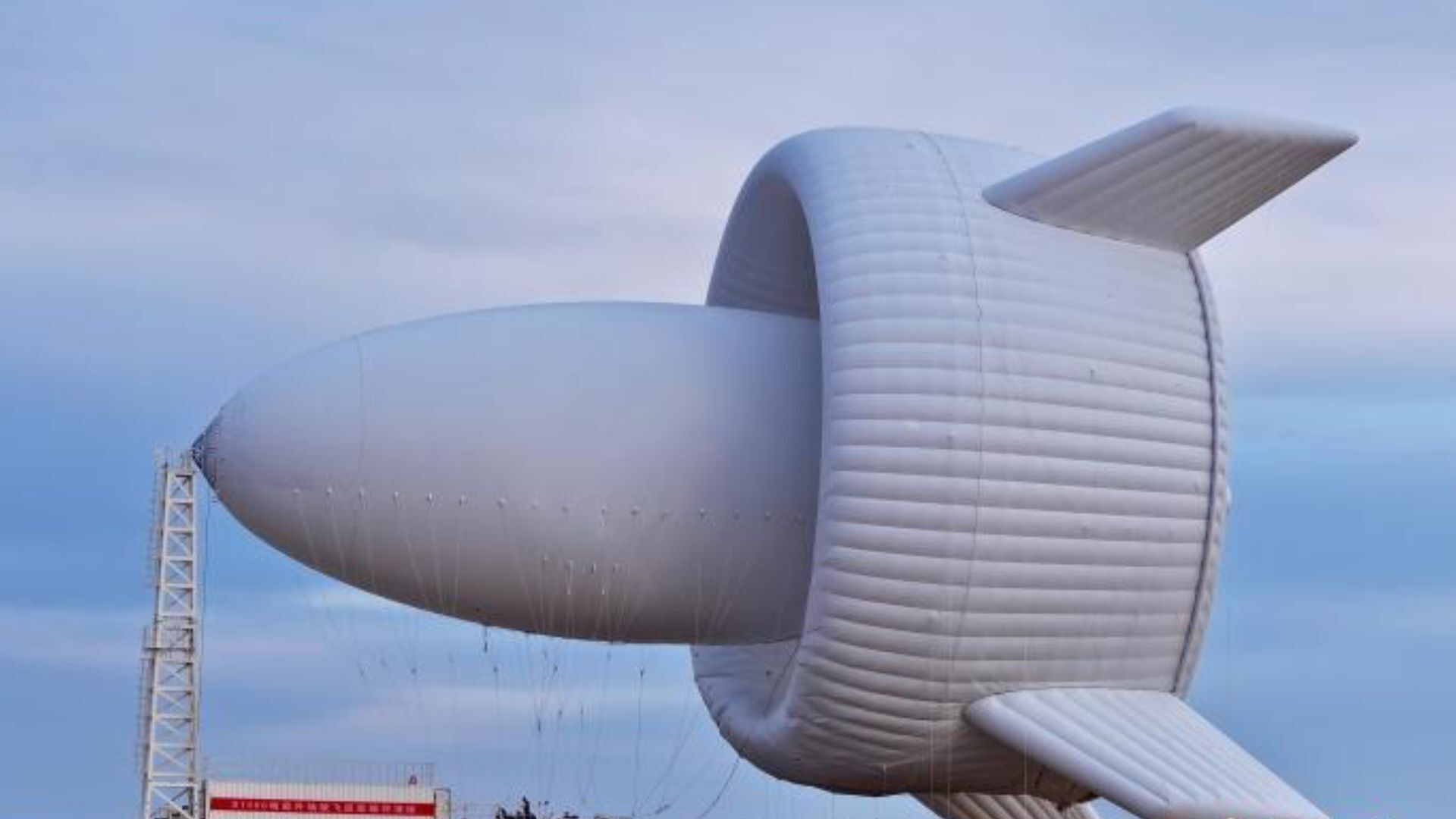"High-altitude winds between 1,640 and 3,281 feet (500 and 10,000 meters) above the ground are stronger and steadier than surface winds. These winds are abundant, widely available, and carbon-free.
"The physics of wind power makes this resource extremely valuable. “When wind speed doubles, the energy it carries increases eightfold, triple the speed, and you have 27 times the energy,” explained Gong Zeqi "
Ha! Watch us burn some liquid dinosaurs!
- USA
Fossil fuels are from shit the dinos ate, like plants and other dumb crap. The belief that coal-rollers are cool enough to burn liquid dinosaurs is easily the single biggest lie of the oil industry.
Closely followed by -gestures wildly-
Lol, got your new advert campaign… Gasoline is vegan
Want to eat it?
The whole term fossil fuel is wrong.
And Africa, and South America, and the middle east, and Europe. Don’t pretend the rest of the world isn’t still burning fossil fuels it’s not just the US
Incredible progress on a concept that has been seeking investment for last 15 years. It doesn’t just provide 1.2mw, it also operates at a higher capacity factor than capturing winds closer to ground. I’m sure it can scale even higher.
This is useful for clean energy shipping. Design supports an unthethered airship that produces H2 and transports it at the same time. I believe the design would support forward momentum directly upwind, but some tacking angle would be supported.
This is not just a breakthrough in wind energy generation, it is a breakthrough in airship capability.
An untethered AWE cannot produce any power
Contentious. Thethering increases power production by restricting the “sail movement power”. The blimp part is highly/perfectly aerodynamic, and the betz limit means that a turbine does not fully “act like a parachute”. Ground vehicles that proved faster than wind speed directly upwind could use similar principle to turn a propulsion prop, that increases forward/apparent wind speed generating more power.
This relates to same incredulity for faster than wind upwind ground experiment, and needs experimental proof. But principles of sailing are indeed magical, and simply generating enough power to move forward is extremely useful, even if tacking were needed.
In all your examples there is the ground to provide a counteracting force. Maybe I am misunderstanding what you mean by untethered, but any initial airspeed difference between the wind and your system will eventually vanish and you’ll move along with the surrounding air.
I co-founded an AWE startup 8 years ago and let me tell you, literature does not support your claim.
…produces H2?
electrolysis of water (partially from starting water reservoir, and partially from air humidity = dehumidifier step), can displace water weight with increased H2 pressure in airship. Can put an infinite amount of these over ocean with no land lease costs, but moving giant ships solves the issue of thethering them.
Finally the stupid floating jet engine looking turbines from Big Hero 6, except IRL they actually look good.

Edit: I was trying to get more information from other articles and got the S1000 (100kW) mixed up with the S1500 (1000kW)
They’re trying to get it to100kW. That’s like a pretty big generator but not a huge one. So this isn’t a replacement for wind farms just yet. The picture is from a year ago. No mention of costs.Would it be possible to use heat to get it to float, instead of helium? Heat it up with electricity.
The article says:
The S1500 features a main airfoil and an annular wing that together form a giant duct. Inside this duct are 12 turbine-generator sets, each rated at 100 kW.
That suggests to me (admittedly a layman) that each blimp is more like 1.2MW?
The title itself already says it’s 1MW.
Sorry about that, I got all excited at just a tenth of what they are trying to achieve. Oops
It’s all good mate, we’ve all got over excited at times.
Would it be possible to use heat to get it to float, instead of helium? Heat it up with electricity.
Sure, that would be possible. The generators themselves will produce some amount of heat. It’s also going to have a fair amount of passive lift, as it’s essentially a kite. So simply being able to maintain a rigid shape and effective airfoil could do a lot to produce the desired lift. If it were redesigned with that in mind, shaped more like a glider/kite/parasail, something to maximize lift, it’s possible that it could be done without a light gas, though it would also be more reliant on favorable winds.
I have to wonder though, how much the power transmission lines weigh, that seems like a serious limiting factor on maximum attainable altitude.
The transmission line question is interesting though, there’s a complex optimization problem there. Traditionally with wind, larger turbines are more efficient. As you increase the turbine blade size, the area that the blades cover (and thus power generation potential) increases more than the mass of the blades do. So the result is (generally speaking) a larger wind turbine is more efficient than a smaller one. But now factor in the transmission line… The larger the turbine the more power it generates AND the thicker (and heavier) the transmission line has to be for its entire length. To complicate things more, higher altitudes mean stronger and more reliable wind. So now how do you optimize for turbine size/cable gauge, and cable length/altitude?
It seems tricky, but like perhaps there’s just a right answer, an optimal size.
it is 1.2mw = 12x100kw
Did they actually generate power during the test flight?
“demonstrated 1mw production” from other sources.
[face Palm].
JFC people, take a grade 10 physics class.
How about you take a ninth-grade speech class first?
Say what you will at least China seems produce some much needed tech in exchange for selling their people to capitalism, the latter which almost all countries do but in exchange for funnelling the 99.99 % of the revenue to billionaires and/or war (pulled the stats out of my hass).
Switching to renewables makes a lot of sense from an economic and ecologic point of view but also geostrategically. Unfortunately, Western governments have pretty much lost the ability to act on those considerations. This is due to then being beholden to a few billionaires who would rather see civilisation as we know it end than accept a few percentage points revenue drop for a couple of quarters.
They aren’t limited by democracy.
This is a factual statement. Whether people like how it sounds or not.
It is true, though lacking fail safes of a real democracy is a dangerous game to play in the long term, even if technically positive in an instance. As most autocratic leaders seek to gain continuous and more power. Or their predecessor does.
I’d be more interested about the cable that is going to bring all that power to the ground level. With traditional tech that would weigh a shit-ton. Light weight generator would be easy peasy compared to that.
They should do a Nikola Tesla and transmit electricity wirelessly
Maybe over estimate temperature deratings and maybe add a new wind speed thermal pulling capacity. But more likely forgo European and NA electrical standards entirely and submit questionables value for CE approval.
Maybe there’s energy intensive processes that they could do up there instead. Something like Haber Bosch. Then bring the products down.
Microwave death ray to beam it down could be fun.
Local residents metallic objects would shoot sparks every now and then.
It’s a novel approach, but the Chinese aren’t the only ones trying to harvest energy from high winds: https://skysails-power.com/how-power-kites-work/
Promising concept too, but this is 250-500x the scale of that.
How so, when skysails talks about “Venyo harnesses the power of high-altitude winds with speeds of 13 m/s and a continuous output of up to 200 kW.” while the S1500 is featured with “Inside this duct are 12 turbine-generator sets, each rated at 100 kW.”?
It’s more like factor 5-6.Their v2 product produces about 5kw at much lower altitude (weaker 9m/s winds). 13m/s is a big ask. They don’t go as high as 1000m. I was comparing to their v2 product instead of the 200w theoretical max of their v1 product. But the blimp may not produce 1.2mw all the time either.
Yah, we need to have them running to get real numbers.
I find both approaches promising.
Ways to make electric energy available without burning fossil fuel are good.
What matters is scalability and how much material and cost you need to produce per energy unit. Kites (either parasails or fixed wing) are much simpler, can be scaled up too, and you only need a simple cable that pulls the generator’s winch. Overall kites seem much more efficient to scale up.
When wind speed doubles, the energy it carries increases eightfold,
Edit: I’m wrong, see edit below!
Huh? Kinetic energy increase is square, not cubic.
KE=1/2 m v^2
So every doubling of speed should increase the available kinetic energy by 4 times, not 8. 3 times the speed is 9 times the energy. Granted there are probably some efficiency gains in excess of this at the low end,
but as a rule that’s just wrong.Edit: Cool, I learned something new! I neglected to consider it in terms of power, just thought about kinetic energy.
So something like: KE = 1/2 m v^2
= 1/2 ( rho V) v^2
= 1/2 ( rho A d) (d/t)^2
= 1/2 rho A d^3 1/t^2
Where P = KE/t
Thus:
P = 1/2 rho A (d/t)^3
= 1/2 rho A v^3
Lots of other aspects I’m sure I have wrong, but I see how the cubic came to be.
It has to do with type of turbine that uses “airfoil principle”. Your formula works for “cup”/Parachute design, but airfoils/upwind sails are “magic”
TIL thanks for bringing this up
Saw this in Big Hero Six. It’s a crazy concept. Hopefully it works.
Cities are going to start looking like San Fransokyo (Big Hero 6) soon. Seems like an excellent idea though. If it really gets pursued, I wonder how it will interact with air travel, since I would imagine you would need no fly zones around these, at least at a certain height.
Very interesting development. Especially that it can be deployed in disaster zones to provide energy - if there is a strong foundation to anchor it, probably.
That looks like a giant…
With a traditional wind turbine, if the wind speeds get too high, the turbine locks the rotation and feathers the blades. For the airship however, people will have to manually take it down and later erect it again. Hopefully they get to it in time, otherwise it’s going to violently take itself down and/or fly off. Either way, that is a bunch of extra cost incurred on a regular basis.
Strikes me as an impractical solution.
Shira, get me my god damned tea!
I assume they have designed these in a way that doesn’t adversely impact migratory birds
Birds don’t fly at 3,000 feet.
Some very few do, not sure if they’re in China though.
“Windfarms hurt birds” is 90+% fossil fuel propaganda though. Yes birds run into windmills, they also run into skyscrapers and houses and antennas and planes.
We should of course look for ways to mitigate that. We should not just pretend smokestacks do no harm and not develop renewable energy projects.
Just vultures, cranes, geese, ducks, kites, swans, condors…














